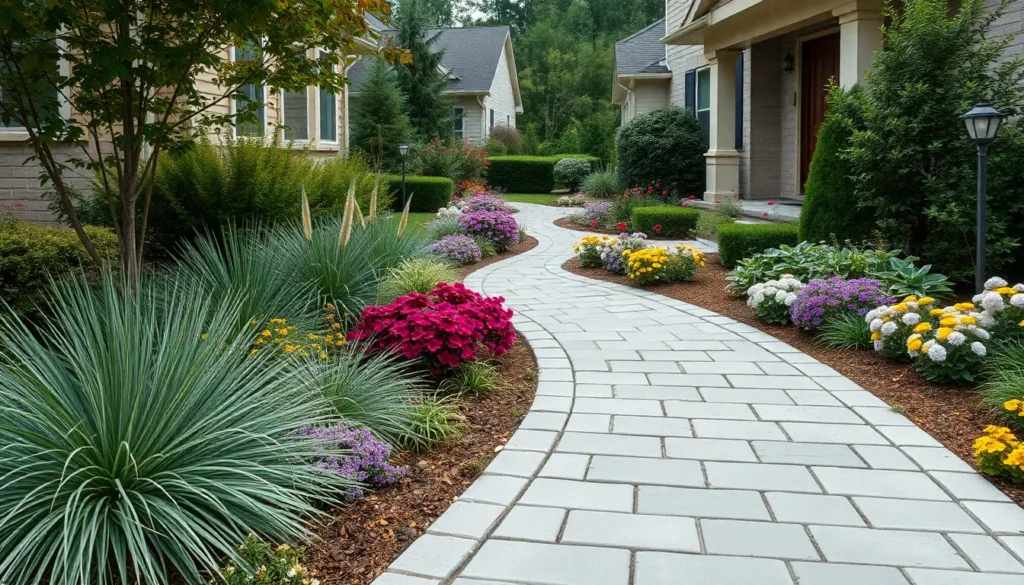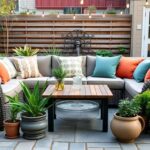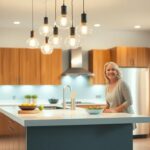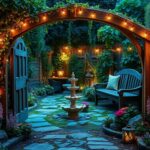We’ve all walked past that perfectly manicured front yard and wondered how much time and money it must take to maintain. The truth is you don’t need a massive budget or green thumb to transform your front yard into a stunning focal point that boosts your home’s curb appeal.
Simple front yard landscaping can dramatically increase your property value while creating a welcoming entrance that makes you proud to come home. Whether you’re dealing with a small space or working with challenging conditions like poor soil or limited sunlight we’ve got answers that work.
From low-maintenance plant combinations to strategic placement of decorative elements these straightforward ideas will help you create a beautiful industry that looks professionally designed. We’ll show you how to maximize impact with minimal effort so you can enjoy a gorgeous front yard without the stress of complicated maintenance routines.
Create a Welcoming Entrance With Strategic Pathway Design
A well-designed pathway transforms your front entrance into an inviting focal point that guides visitors naturally to your door. Strategic pathway design creates visual flow while establishing clear boundaries in your landscaping layout.
Choose Low-Maintenance Materials Like Gravel or Pavers
Gravel pathways offer the most budget-friendly option for creating defined walkways that require minimal upkeep. We recommend using decomposed granite or pea gravel in neutral tones like gray or beige to complement most home exteriors. These materials drain well during rainy seasons and won’t crack like concrete surfaces.
Concrete pavers provide a more structured appearance while maintaining low maintenance requirements. Standard 12×12 inch pavers create clean lines and cost approximately $2-4 per square foot installed. They resist weeds better than loose materials and offer slip-resistant surfaces for safety.
Natural stone delivers premium aesthetics without ongoing maintenance demands. Flagstone and slate varieties withstand weather conditions for decades while developing attractive patina over time. Installation costs range from $8-15 per square foot but eliminate replacement expenses.
Add Soft Lighting Along the Walkway
Solar stake lights provide the easiest installation method for pathway illumination without electrical work. Position these fixtures 6-8 feet apart along both sides of your walkway to create consistent lighting patterns. Modern LED solar lights produce warm white light for 8-10 hours per charge.
Low-voltage industry lighting offers more reliable illumination with professional appearance. Install path lights or bollard fixtures connected to a transformer system for consistent brightness throughout the evening. These systems typically cost $300-600 for a standard front walkway.
String lights create ambient lighting that enhances your entrance’s welcoming atmosphere. Hang LED string lights between posts or trees flanking your pathway using weather-resistant fixtures. This approach works especially well for curved or irregular pathway shapes.
Incorporate Border Plants for Natural Definition
Ornamental grasses establish soft boundaries while requiring minimal watering once established. We suggest fountain grass or feather reed grass varieties that grow 2-3 feet tall and provide year-round structure. Plant these grasses 18-24 inches apart for full coverage within one growing season.
Evergreen shrubs create permanent pathway borders that maintain their appearance through all seasons. Boxwood hedges or dwarf holly varieties work well when trimmed to 12-18 inch heights. These plants require pruning twice yearly but provide consistent definition.
Perennial flowers add seasonal color while marking pathway edges naturally. Daylilies and hostas spread gradually to fill spaces and bloom reliably each year. Mix different bloom times to ensure continuous color from spring through fall along your walkway borders.
Establish Foundation Plantings That Require Minimal Care
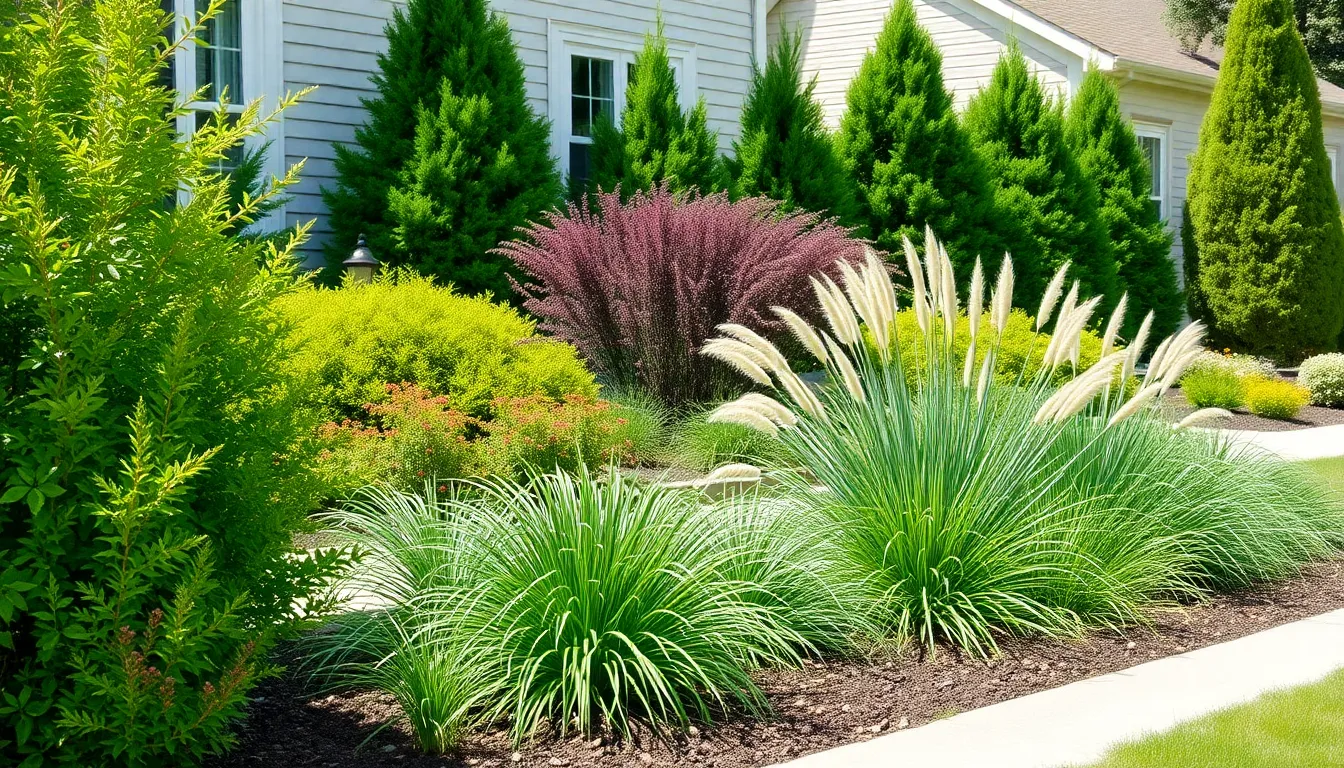
Smart foundation plantings form the backbone of any successful front yard design. We recommend starting with hardy shrubs and perennials that thrive with minimal intervention while providing lasting structure to your industry.
Select Native Shrubs for Year-Round Structure
Native shrubs adapt naturally to your local climate and soil conditions, making them perfect for low maintenance landscaping. These plants require less water and care compared to non-native varieties while offering consistent visual appeal throughout all seasons. We suggest replacing traditional lawn areas with drought-tolerant native plants through xeriscaping techniques, which significantly reduces both water usage and ongoing maintenance requirements.
Popular native shrub options include serviceberry, spicebush, and native azaleas, depending on your region. Each of these provides seasonal interest while requiring minimal pruning or fertilization once established.
Layer Heights With Dwarf Varieties in Front
Creating visual depth starts with strategic plant placement using different heights. We place dwarf shrubs or compact perennials in front of taller foundation plants to establish natural layering that draws the eye upward. This technique prevents overcrowding while ensuring each plant receives adequate sunlight and air circulation.
Dwarf varieties like compact boxwood, miniature hostas, or low-growing ornamental grasses work exceptionally well as front-row plantings. These smaller plants stay manageable in size and won’t obstruct views of the taller specimens behind them.
Choose Evergreen Options for Consistent Appeal
Evergreen plants provide year-round structure and color when deciduous plants go dormant. We incorporate evergreens as anchor plants that maintain visual interest during winter months while serving as a backdrop for seasonal bloomers. Foundation evergreens like juniper, yew, or arborvitae offer reliable greenery that requires minimal seasonal care.
Combining evergreens with flowering perennials creates a balanced industry that looks intentional rather than sparse. This pairing ensures your front yard maintains curb appeal through all seasons while keeping maintenance demands low.
Add Color and Texture With Easy-Care Perennial Beds
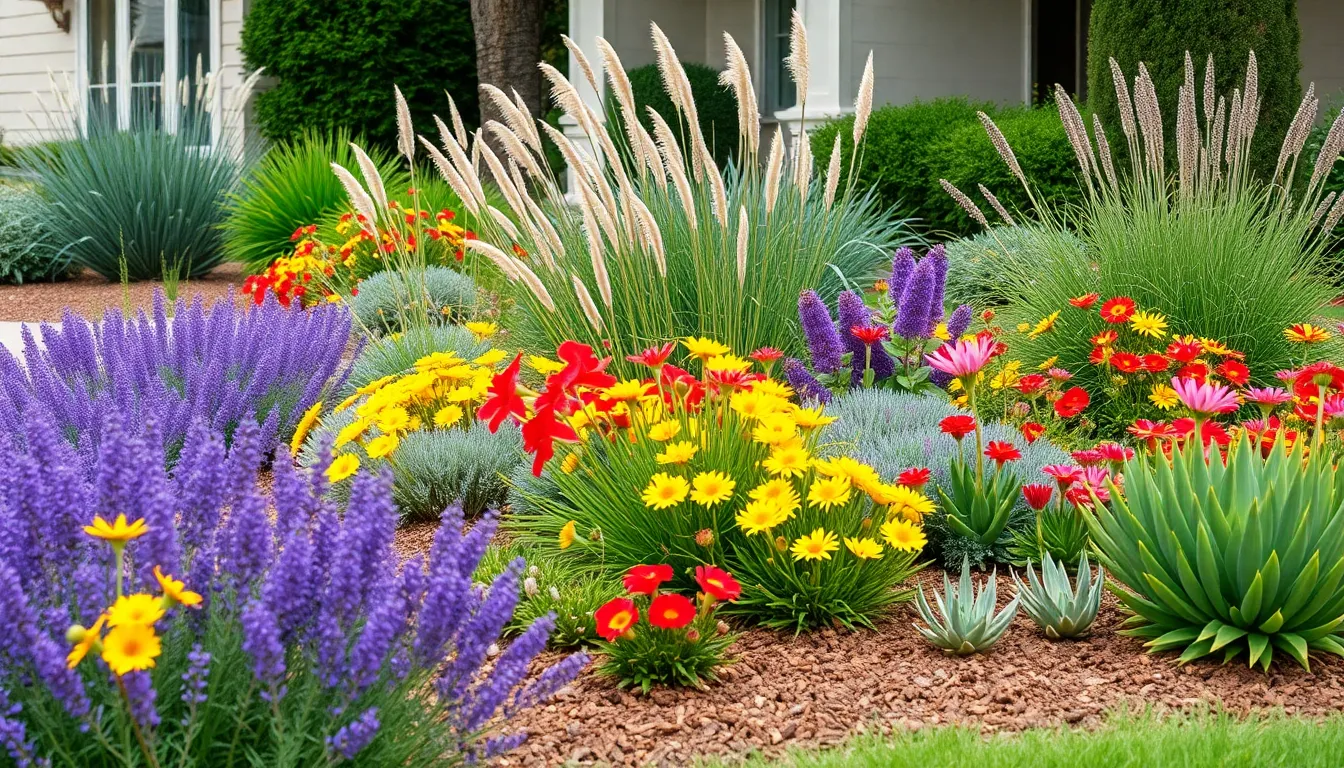
Creating vibrant perennial beds transforms your front yard into a colorful showcase that requires minimal ongoing effort. Mixed plantings of flowering perennials and ornamental grasses deliver the visual interest we’re looking for while establishing a sustainable industry foundation.
Plant Drought-Tolerant Flowering Perennials
Selecting drought-tolerant perennials dramatically reduces our watering responsibilities while maintaining stunning visual appeal throughout the growing season. Native plants adapt naturally to local climate conditions, making them ideal choices for sustainable front yard landscaping. We recommend incorporating succulents and xerophytic plants that thrive in dry conditions without sacrificing beauty.
Xeriscaping offers a modern approach to front yard design that replaces traditional grass lawns with drought-resistant plant combinations. This eco-friendly method has gained popularity across dry regions where water conservation is essential. Plants like lavender, Russian sage, and ornamental sedums provide lasting color while requiring minimal irrigation once established.
Different leaf shapes and flower colors enhance the depth and visual appeal of our perennial beds. Combining spiky plants like yucca with rounded forms such as ornamental grasses creates textural contrast that draws the eye. We can achieve year-round interest by mixing plants with varying bloom times and foliage characteristics.
Create Seasonal Interest With Bulb Combinations
Spring bulbs inject vibrant bursts of color into our front yard industry when most other plants are still dormant. Tulips, daffodils, and crocuses emerge early in the season to provide that first splash of color we’ve been waiting for through winter. Layering different bulb varieties ensures continuous blooms from early spring through late spring.
Staggering bloom times keeps our perennial beds vibrant throughout different seasons by combining bulbs with summer and fall flowering plants. Early bloomers like crocuses give way to daffodils, followed by tulips, creating a natural succession of color. We can extend this seasonal display by including late-blooming alliums and autumn crocus for fall interest.
Mixing bulbs with established perennials creates a layered planting approach that maximizes our garden space efficiently. Bulbs naturally die back after blooming, allowing perennial foliage to fill in and hide the declining bulb leaves. This companion planting strategy ensures our beds never look empty or unkempt during transition periods.
Use Mulch to Reduce Maintenance and Retain Moisture
Mulching provides essential protection for our perennial beds while dramatically reducing ongoing maintenance requirements. Organic mulches retain soil moisture by reducing evaporation, which means less frequent watering for our drought-tolerant plants. Wood chips, shredded bark, and compost-based mulches also improve soil structure as they decompose.
Weed prevention becomes effortless when we apply a thick layer of mulch around our perennial plantings. The mulch barrier blocks sunlight from reaching weed seeds, preventing them from germinating and competing with our desired plants. We save countless hours that would otherwise be spent pulling weeds throughout the growing season.
Temperature regulation helps our plants establish stronger root systems by protecting them from extreme heat and cold fluctuations. Mulch acts as an insulating layer that keeps soil temperatures more stable throughout seasonal changes. Gravel and river rocks offer attractive alternatives to organic mulches while providing similar moisture retention and weed suppression benefits.
Visual appeal improves significantly when we define our perennial beds with clean mulch edges that separate garden areas from lawn spaces. The finished appearance creates a professional look that enhances our home’s curb appeal. Different mulch colors and textures add another design element that complements our plant selections and overall industry theme.
Install Low-Maintenance Ground Cover for Problem Areas
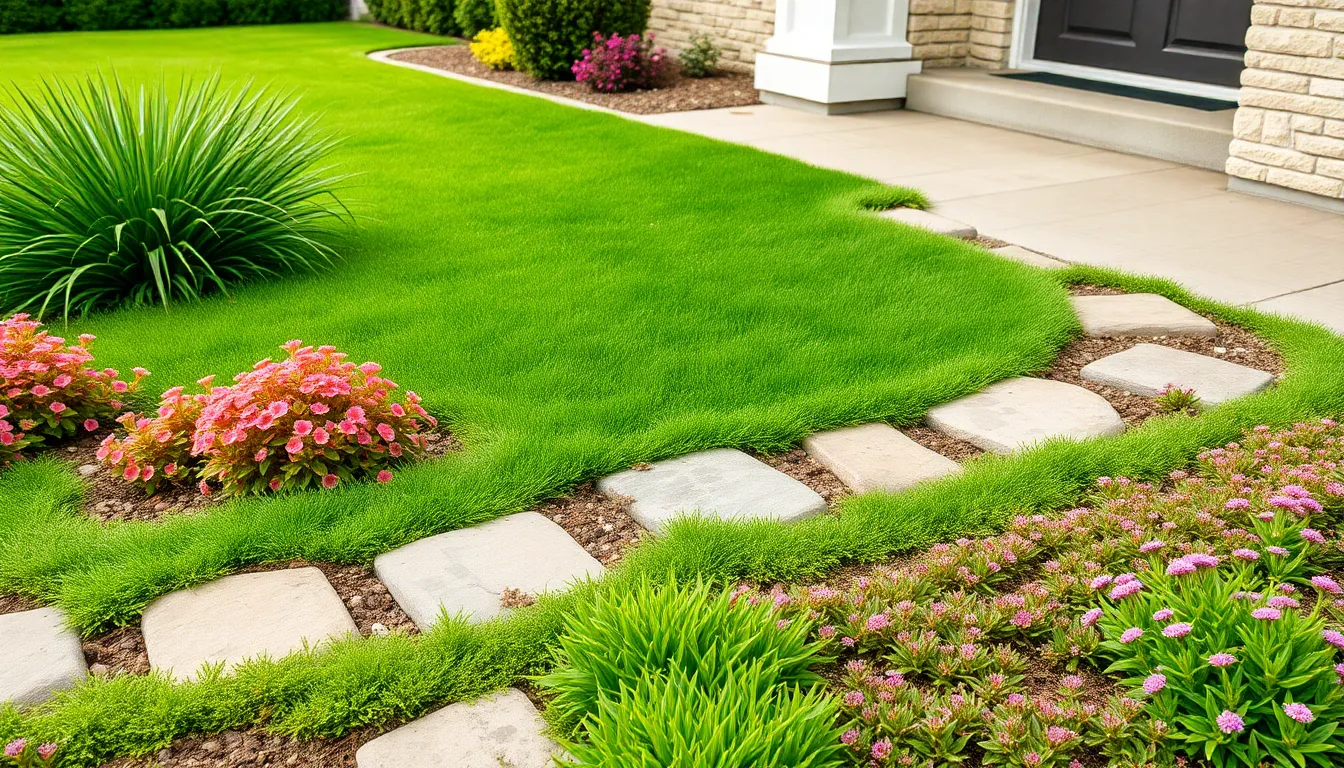
Problem areas in your front yard don’t have to stay problematic when you choose the right ground cover answers. We’ve found that strategic ground cover installations can transform challenging spots into attractive industry features that require minimal ongoing care.
Replace Difficult Grass Areas With Spreading Plants
Struggling grass patches become beautiful industry features when you replace them with hardy spreading plants. We recommend selecting ground covers that naturally spread to fill bare spots while handling foot traffic better than traditional grass. Popular spreading options include creeping thyme, ajuga, and pachysandra, which create dense coverage without frequent watering or fertilizing.
Native spreading plants adapt to your local climate conditions and reduce the need for extensive maintenance routines. These plants establish root systems that prevent soil erosion while adding interesting textures and seasonal colors to your yard. Ornamental grasses like buffalo grass or sedge varieties work particularly well in areas where traditional turf struggles to thrive.
Maintenance becomes significantly easier when spreading plants take over difficult lawn areas. Your water bills decrease because these plants typically require less irrigation than grass once established. Fertilizer applications become unnecessary since most ground covers thrive in poor soil conditions that challenge conventional lawns.
Use Decorative Stones for High-Traffic Zones
High traffic areas benefit tremendously from decorative stone installations that eliminate the need for watering or fertilizing. We’ve observed that gravel gardens work exceptionally well in dry climates where grass maintenance becomes costly and time consuming. River rocks and decorative gravel create natural textures that enhance your yard’s aesthetic appeal while requiring zero ongoing care.
Pathway definition becomes effortless when you use stone materials to border walkways and driveway edges. Gravel paths guide visitors naturally while withstanding heavy foot traffic that would damage grass or delicate plants. These materials also provide excellent drainage answers for areas prone to standing water after rain.
Cost effectiveness makes decorative stones an attractive option for budget conscious homeowners. Installation requires minimal labor compared to planting and maintaining grass areas. Stone materials last for years without replacement while maintaining their appearance through all weather conditions.
Consider Artificial Turf for Consistently Green Spaces
Modern artificial turf options provide the lush appearance of grass without any of the traditional maintenance requirements. We’ve seen important improvements in artificial turf quality, with today’s products offering realistic textures and colors that closely mimic natural grass. Installation creates an instantly green space that stays vibrant year round regardless of weather conditions or seasonal changes.
Maintenance elimination becomes the primary benefit of choosing artificial turf for your front yard areas. Mowing schedules disappear along with watering routines and fertilizer applications. Your weekend time becomes available for other activities while your yard maintains its pristine appearance.
Durability factors make artificial turf particularly suitable for areas with challenging growing conditions or heavy use. Pet owners find artificial turf especially beneficial since it handles wear patterns better than natural grass while staying green even though heavy traffic. Water conservation becomes automatic since artificial surfaces require no irrigation, making them ideal for drought prone regions.
Incorporate Focal Points That Make a Statement
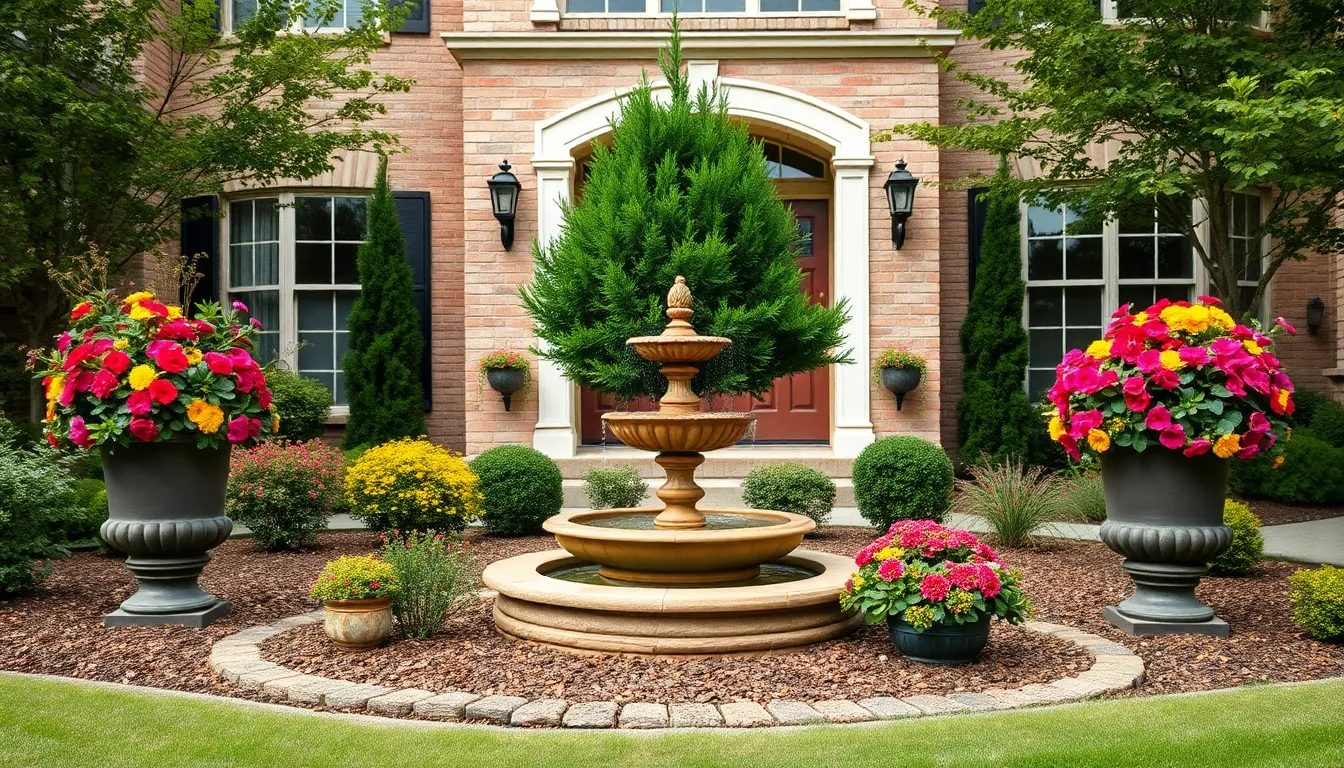
Visual anchors draw the eye and create immediate impact in your front yard industry. Strategic placement of standout features transforms ordinary spaces into memorable entrances that enhance curb appeal without requiring complex installations.
Add a Single Specimen Tree as a Centerpiece
Planting one well-chosen specimen tree creates a natural focal point that anchors your entire front yard design. This single tree provides vertical structure while offering shade and seasonal interest throughout the year.
Select trees based on your climate to ensure long-term success with minimal maintenance. Deciduous varieties like flowering dogwood or Japanese maple offer stunning seasonal displays, while evergreen options provide consistent year-round structure.
Position your specimen tree approximately 15-20 feet from your home’s foundation to allow for mature growth. This placement creates proper scale while preventing future conflicts with rooflines or utility lines.
Surround the tree base with mulch or low plantings to create a finished appearance. River rocks or decorative stones can substitute for traditional mulch while reducing ongoing maintenance needs.
Install Simple Water Features for Visual Interest
Water features add ever-changing movement and soothing sounds that enhance your front yard’s sensory appeal. Simple installations create sophisticated focal points without requiring extensive plumbing or high maintenance commitments.
Bubbling rock fountains offer excellent starter options that combine natural aesthetics with gentle water sounds. These self-contained units require only electrical connections and minimal seasonal maintenance.
Small tiered fountains provide classic elegance while remaining budget-friendly and easy to install. Position these features where they’re visible from both the street and your home’s windows for maximum impact.
Solar-powered water features eliminate electrical requirements while offering eco-friendly operation. These units work effectively in sunny locations and reduce long-term operating costs significantly.
Use Large Decorative Planters for Flexible Design
Large planters provide design flexibility while creating structured focal points that complement your existing industry elements. These containers enable seasonal updates and easy relocation when design needs change.
Choose planters in sizes ranging from 18-24 inches in diameter to create substantial visual impact. Terra cotta, concrete, or weather-resistant resin materials offer durability with varying aesthetic appeals.
Fill planters with seasonal combinations of flowers, shrubs, or small ornamental trees. Spring bulbs, summer annuals, and winter evergreens provide year-round interest with simple plant swaps.
Group planters in odd numbers near entryways, along pathways, or beside water features to create cohesive design relationships. This arrangement technique enhances visual flow while maintaining organized appearances.
Position larger planters as standalone statement pieces while using smaller containers to complement your specimen tree or water feature installations. Strategic placement reinforces your front yard’s overall design hierarchy.
Define Spaces With Natural Borders and Edging
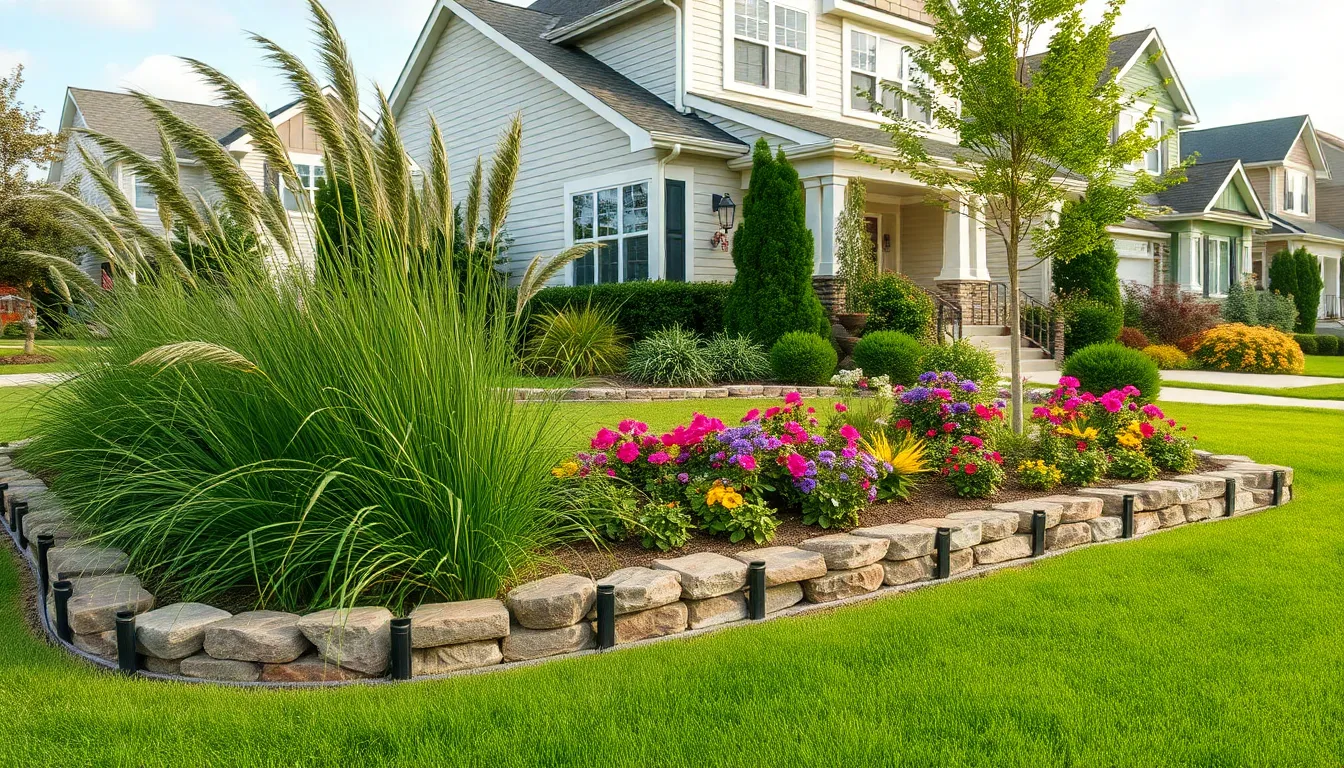
Garden beds serve as the foundation for organizing your front yard industry effectively. Natural borders help separate different areas while maintaining a cohesive flow throughout your outdoor space.
Create Clean Lines With Industry Edging
Industry edging transforms your front yard by establishing crisp boundaries between lawn areas and planting beds. Materials like brick, stone, metal strips, or plastic edging create visual contrast that makes each garden zone distinct and purposeful. Professional landscapers recommend edging because it prevents grass and weeds from invading flower beds, which reduces your long-term maintenance efforts significantly.
Benefits of quality edging materials:
| Material | Durability | Maintenance | Cost |
|---|---|---|---|
| Metal strips | 15-20 years | Low | Medium |
| Brick | 25+ years | Minimal | High |
| Stone | 30+ years | Minimal | High |
| Plastic | 5-10 years | Medium | Low |
Installing edging properly ensures your landscaping investment stays organized and polished throughout the seasons. We’ve found that well-defined edges make even simple plantings appear more intentional and professionally designed.
Use Ornamental Grasses for Soft Boundaries
Ornamental grasses provide flowing, natural transitions between different industry zones without creating harsh visual barriers. These versatile plants add texture and movement to your front yard while requiring minimal water and care once established. Popular varieties like fountain grass, feather reed grass, and blue fescue create soft screens that enhance privacy subtly.
Grasses complement harder edging materials beautifully by softening the overall industry design. Their seasonal changes bring year-round interest as they shift from green growth to golden autumn colors and winter seed heads. We recommend spacing ornamental grasses 18-24 inches apart to allow for their natural spreading habit while maintaining defined boundaries.
Install Raised Beds for Better Soil Control
Raised beds offer superior control over soil quality and drainage conditions, making them ideal for front yard landscaping projects. These structured planting areas elevate your garden both literally and visually, creating focal points that draw attention to your favorite plants. Building raised beds 6-12 inches high provides enough soil depth for most perennials and shrubs while improving root health significantly.
Construction materials for raised beds include cedar, composite lumber, or stone blocks that complement your home’s architecture. Raised beds make plant maintenance easier by reducing bending and kneeling, while their contained soil stays put during heavy rains. We’ve observed that raised beds filled with quality soil produce healthier plants and better drainage than traditional ground-level plantings.
Adding mulch to your raised beds retains moisture and creates a finished appearance that ties your landscaping together. Decorative rocks or gravel around the bed edges provide additional texture while reducing maintenance needs throughout the growing season.
Maximize Curb Appeal With Seasonal Container Gardens
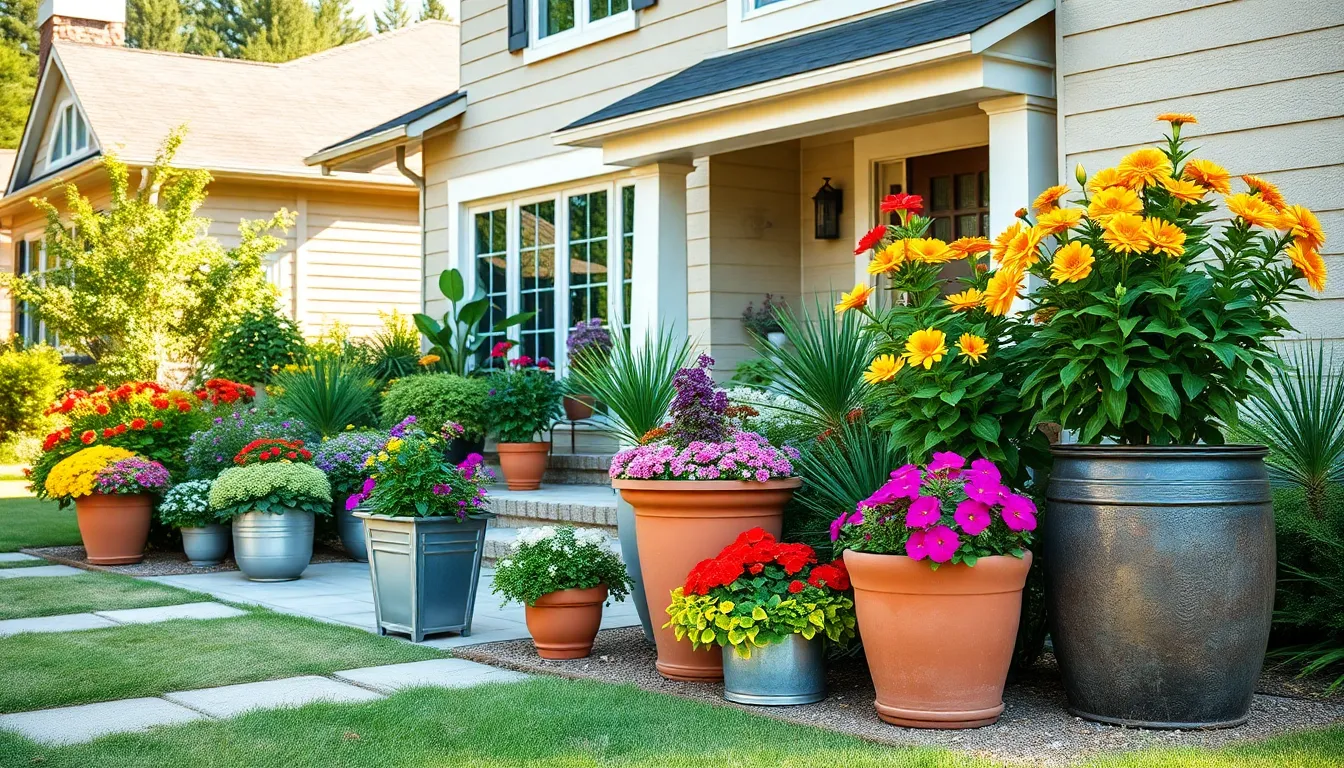
Container gardens offer flexibility to refresh your front yard’s appearance throughout the year without committing to permanent plantings. We can easily adapt seasonal displays to match changing weather conditions while maintaining vibrant curb appeal.
Choose Containers That Complement Your Home’s Style
Architectural style guides container selection to create visual harmony between your home and landscaping elements. Traditional homes benefit from classic ceramic pots or wooden planters that echo timeless design principles. Modern houses pair beautifully with sleek metal containers or geometric concrete planters that reinforce contemporary aesthetics.
Material choices impact both appearance and plant health over time. Terra cotta pots provide excellent drainage and breathability for plant roots. Fiberglass containers resist weather damage while offering lightweight portability for seasonal rearrangements. Stone or concrete planters deliver durability and substantial presence that anchors larger design compositions.
Size proportions matter significantly when selecting containers for maximum visual impact. Large entrance areas accommodate oversized planters that create bold statements near doorways. Smaller spaces work better with medium containers grouped in odd numbers to establish pleasing visual relationships without overwhelming the area.
Select Plants That Thrive in Your Climate Zone
Climate compatibility ensures container gardens flourish with minimal intervention throughout growing seasons. Native plants adapt naturally to local weather patterns and require less water than non-native varieties. Drought tolerant species like ornamental grasses and succulents thrive in containers during hot summer months.
Seasonal plant rotation maximizes color impact while respecting natural growing cycles. Spring displays feature cool weather favorites like pansies and primrose that tolerate temperature fluctuations. Summer arrangements showcase heat loving annuals such as petunias and marigolds that bloom continuously in warm conditions.
Fall transitions bring opportunities for seasonal interest through decorative elements and hardy plants. Ornamental kale and chrysanthemums provide rich autumn colors that complement changing foliage. Winter containers benefit from evergreen selections like dwarf conifers and winter flowering plants that maintain structure during dormant months.
Rotate Seasonal Displays for Year-Round Color
Regular plant rotation keeps container displays fresh and prevents soil depletion from repeated plantings. Spring preparation involves replacing winter hardy plants with emerging bulbs and cool season annuals. Summer updates feature vibrant flowering plants that deliver peak color during active outdoor months.
Flexible design approaches allow quick seasonal adjustments without major garden renovations. Portable containers enable easy relocation to optimize sun exposure as seasonal light patterns change. Modular planting systems let us swap individual containers while maintaining overall design coherence throughout the year.
Budget conscious rotation strategies extend container garden value through strategic plant selection. Perennial foundation plants remain in containers year round while seasonal accents provide changing color highlights. Annual replacements focus on a few key containers rather than complete garden overhauls that strain landscaping budgets.
Maintain Your Simple Landscape With Efficient Strategies
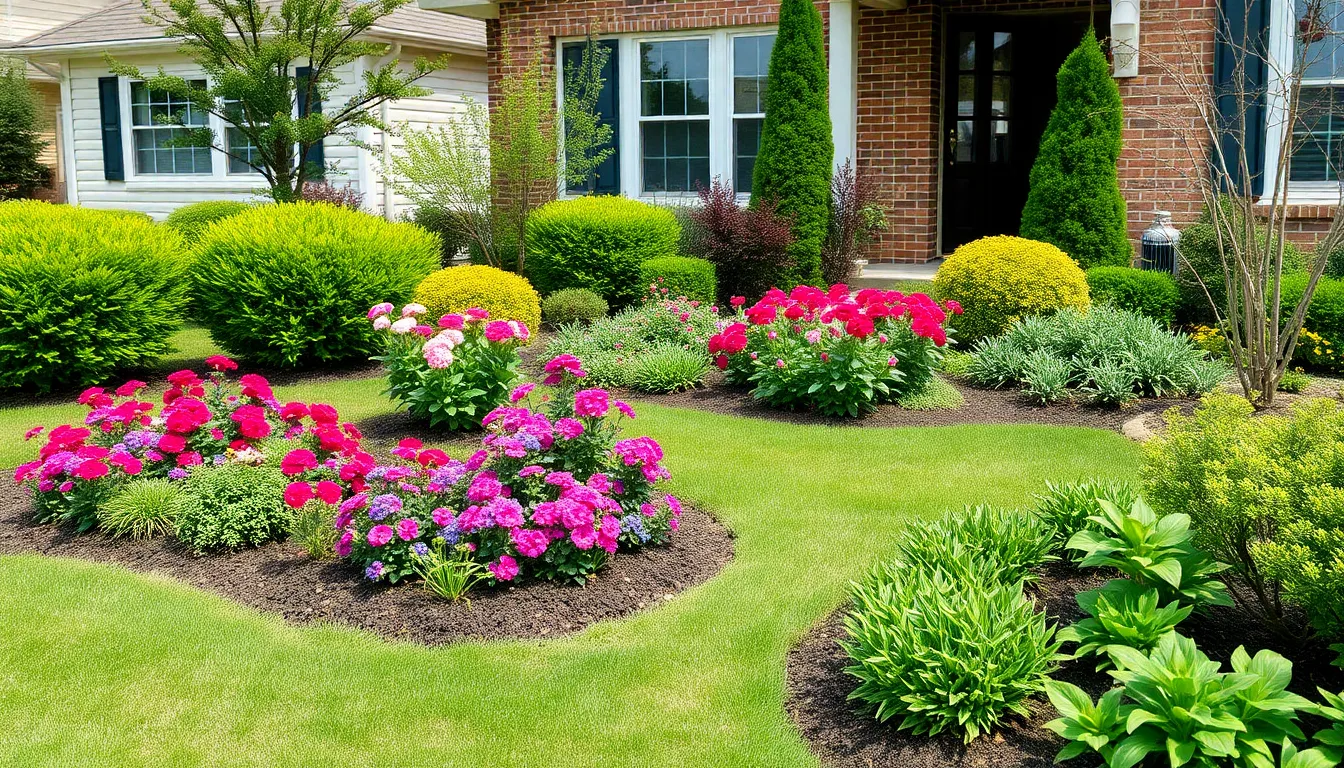
Keeping your front yard beautiful doesn’t require endless hours of maintenance when you carry out the right strategies. Smart maintenance techniques help preserve your industry’s appeal while reducing time and resource investment.
Carry out Drip Irrigation for Water Conservation
Drip irrigation systems deliver water directly to plant roots, making them incredibly efficient for front yard landscaping. This targeted approach minimizes evaporation and runoff while ensuring your plants receive consistent moisture. Installing drip lines around flower beds, shrubs, and trees conserves water by up to 50% compared to traditional sprinkler systems.
Setting up drip irrigation involves placing tubing along plant rows with emitters positioned near each plant’s base. We recommend using pressure compensating emitters to maintain consistent water flow across different elevations. Timer controls allow you to automate watering schedules, delivering precise amounts of water when plants need it most.
Maintenance for drip systems requires only periodic checking of emitters for clogs and adjusting flow rates seasonally. This irrigation method works exceptionally well with mulched areas, as the combination reduces water waste and keeps soil moisture levels stable.
Schedule Regular Pruning and Deadheading
Regular pruning prevents overgrowth while maintaining your plants’ natural shape and health. Scheduling pruning sessions during dormant seasons for most shrubs and trees minimizes stress on plants. Deadheading spent flowers throughout the growing season promotes continuous blooming and keeps your front yard looking tidy.
Timing matters significantly for different plant types, with spring flowering shrubs requiring pruning immediately after blooming. Summer and fall blooming plants benefit from late winter or early spring pruning before new growth begins. Removing dead, damaged, or crossing branches improves air circulation and reduces disease risk.
Tools like clean, sharp pruning shears make precise cuts that heal quickly without damaging plant tissue. We suggest sanitizing tools between plants to prevent spreading diseases. Consistent deadheading of perennials and annuals extends blooming periods and encourages fuller plant growth.
Apply Organic Fertilizers for Healthy Plant Growth
Organic fertilizers improve soil structure while providing essential nutrients in an environmentally friendly way. These fertilizers release nutrients slowly, reducing the risk of burning plants and providing sustained nourishment throughout the growing season. Compost, aged manure, and organic granular fertilizers enhance soil health by encouraging beneficial microorganism activity.
Application timing affects fertilizer effectiveness, with early spring being ideal for most front yard plants. Organic options like fish emulsion work well for quick nutrient boosts during active growing periods. Slow release organic granules provide consistent feeding for 3 to 4 months, reducing application frequency.
Soil testing helps determine exact nutrient needs before applying any fertilizer type. Working organic matter into the soil around plants improves water retention and root development. This approach supports plant vitality while building long term soil health that reduces future maintenance requirements.
Conclusion
Creating a beautiful front yard doesn’t require extensive gardening expertise or a massive budget. With the right combination of low-maintenance plants strategic pathways and thoughtful focal points we can transform any entrance into an inviting space that boosts curb appeal.
The key lies in choosing native plants that thrive in our local climate while incorporating elements like seasonal containers and efficient irrigation systems. These simple strategies ensure our front yard remains attractive year-round without demanding countless hours of upkeep.
By focusing on practical answers like raised beds decorative edging and drought-tolerant plantings we’re investing in long-term beauty that pays dividends in both property value and daily enjoyment. Start with one or two elements that appeal to you most and build from there.
Frequently Asked Questions
How can I improve my front yard’s curb appeal on a tight budget?
Focus on simple landscaping with low-maintenance plants, strategic pathway design using affordable materials like gravel or concrete pavers, and foundation plantings with native shrubs. Add mulch to garden beds and incorporate seasonal container gardens that can be rotated throughout the year for continuous color without expensive renovations.
What are the best low-maintenance plants for front yard landscaping?
Choose native shrubs like serviceberry, spicebush, and native azaleas, along with evergreen plants such as juniper and yew. Drought-tolerant perennials, ornamental grasses, and ground covers like creeping thyme require minimal watering and care while providing year-round visual appeal.
How do I create an attractive pathway to my front door?
Use low-maintenance materials like gravel, concrete pavers, or natural stone. Add soft lighting with solar stake lights or string lights along the walkway. Border the path with ornamental grasses, evergreen shrubs, and perennial flowers to define the space and guide visitors naturally to your entrance.
What is xeriscaping and how can it help my front yard?
Xeriscaping is an eco-friendly landscaping approach that uses drought-resistant plants to replace traditional lawns. It incorporates succulents and xerophytic plants that thrive in dry conditions, reducing water usage and maintenance while creating an attractive, sustainable landscape design.
How can I add focal points to my front yard without major landscaping?
Plant a single specimen tree as a centerpiece, install simple water features like bubbling rock fountains, or use large decorative planters grouped in odd numbers. These elements create visual anchors and can be easily relocated or updated seasonally for flexible design changes.
What’s the best way to handle problem areas in my front yard?
Replace difficult grass areas with hardy ground covers like creeping thyme or ajuga. Use decorative stones for high-traffic zones, or consider modern artificial turf for consistently green appearance without watering or fertilizing. These solutions transform challenging spots into attractive, low-maintenance features.
How do I maintain seasonal interest in my front yard year-round?
Layer different bulb varieties for continuous spring blooms, use evergreen plants for winter structure, and rotate seasonal container gardens. Mix bulbs with established perennials and incorporate plants that offer different seasonal features like spring flowers, summer foliage, and fall color.
What are the benefits of using mulch in front yard landscaping?
Mulch retains moisture, prevents weeds, regulates soil temperature, and improves visual appeal. It protects perennial beds and reduces maintenance by creating a barrier against competing vegetation while giving garden areas a finished, professional appearance with minimal ongoing effort.

